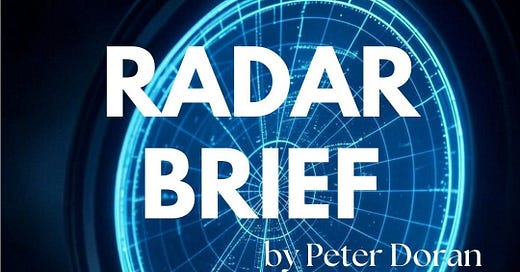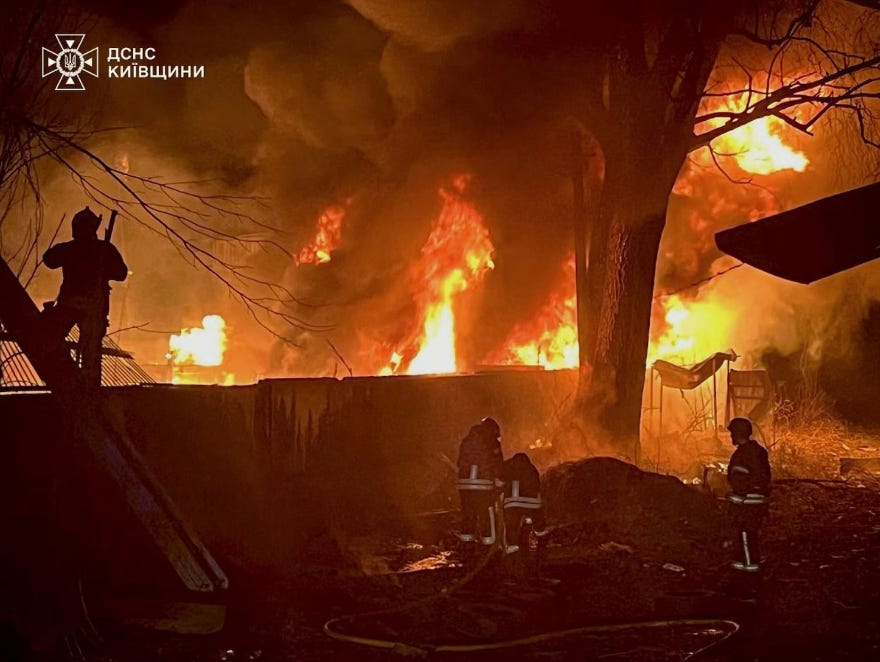The Peace Talks Continue—But to What End?
This week will be marked by U.S.-Ukrainian-Russian diplomatic negotiations, with the reality on the ground in Ukraine telling a different story than optimistic talk about “peace.”
On Saturday night, Russia launched a massive drone assault on Kyiv, firing hundreds of explosive-laden UAVs at the capital. While Ukraine’s air defenses intercepted many, one attack resulted in a particularly gruesome civilian death that has rattled both local and international observers.
The brutality of the strike underscores the stark contrast between the rhetoric of peace talks and the persistent violence that Russia continues to unleash on Ukraine.
Washington’s Historical Missteps
On Monday morning, U.S. and Ukrainian officials convened for discussions, though details remain tightly sealed. Ukrainian President Volodymyr Zelenskyy’s sharp condemnation of Russia’s latest assault will have undoubtedly set the tone for his delegation’s stance in the talks.
Meanwhile, U.S. officials are preparing to engage with their Russian counterparts, but concerns about the American approach have surfaced. Chief among them is the issue of historical misrepresentation—statements from President Trump’s special envoy for peace talks, Steve Witkoff, have raised eyebrows and drawn scrutiny.
In an interview released Friday with commentator Tucker Carlson, Witkoff asserted that five eastern Ukrainian regions—Crimea, Donetsk, Luhansk, Zaporizhzhia, and Kherson—had “been Russian since World War II,” or at least that’s how Moscow views them. This claim, along with others that Witkoff suggested, is demonstrably false.
Many tried to correct the record in near real time. However, Witkoff’s revisionist claims did not stop there.
He further suggested that Moscow’s sham referendums held in these regions showed an “overwhelming majority” in favor of Russian control. These votes, orchestrated under armed occupation and widely condemned as fraudulent, held as much legitimacy as the staged elections in North Korea. Both are tools of coercion rather than expressions of democratic will.
Implications for the Negotiations
The stakes in the peace talks nevertheless remain high—even if the U.S. delegation’s credibility is in jeopardy.
Witkoff’s insistence on asserting historical falsehoods suggests not just a misunderstanding of the facts but, potentially, a deeper ideological investment in a version of events that aligns more with Russian propaganda rather than with historical reality.
This raises a concern, which the White House should carefully consider: If the lead American negotiator believes Russian distortions about the past, what other misconceptions shape his approach to diplomacy? And how can Ukraine trust that its interests will be safeguarded when key figures within the U.S. administration appear to concede Russian territorial falsehoods as a fait accompli?
What’s the difference?
Speaking for the U.S. side, Witkoff is not saying: Some parts of Ukraine have been taken by force of arms; and we must accept the reality of the battlefield as a basis for a ceasefire and eventual peace.
Instead, Witkoff is asserting: Ukrainian territory is ‘Russian land.’ Ukraine is not defending itself against unjust aggression. Rather, Moscow’s forces are legitimately reclaiming their stolen country.
It’s a seismic difference that must not be brushed under the rug.
As the week progresses, attention will turn to the official U.S.-Russia discussions. But with the battlefield still active, and with Washington’s lead envoy seemingly unmoored from the historical record, the question remains: Is this truly a negotiation for peace, or merely a prelude to further Ukrainian concessions?






